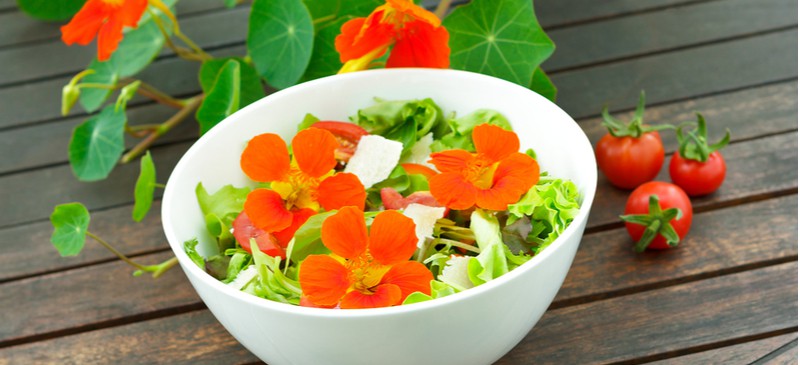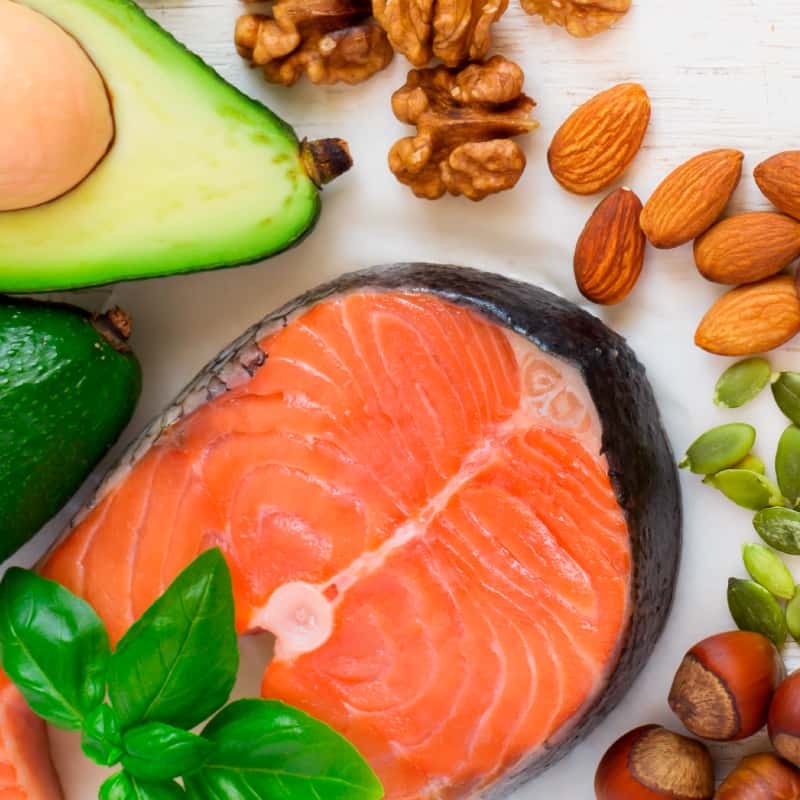This Dr. Axe content is medically reviewed or fact checked to ensure factually accurate information.
With strict editorial sourcing guidelines, we only link to academic research institutions, reputable media sites and, when research is available, medically peer-reviewed studies. Note that the numbers in parentheses (1, 2, etc.) are clickable links to these studies.
The information in our articles is NOT intended to replace a one-on-one relationship with a qualified health care professional and is not intended as medical advice.
This article is based on scientific evidence, written by experts and fact checked by our trained editorial staff. Note that the numbers in parentheses (1, 2, etc.) are clickable links to medically peer-reviewed studies.
Our team includes licensed nutritionists and dietitians, certified health education specialists, as well as certified strength and conditioning specialists, personal trainers and corrective exercise specialists. Our team aims to be not only thorough with its research, but also objective and unbiased.
The information in our articles is NOT intended to replace a one-on-one relationship with a qualified health care professional and is not intended as medical advice.
Nasturtium: The Medicinal Herb With an Antioxidant-Rich, Flavorful Kick
August 13, 2020

Nasturtium is a herbaceous plant that has been used in traditional medicine practices in places such as South America since at least the 1500s.
What is nasturtium good for? Traditional uses of these plants included making teas and tonics to soothe sore throats and colds, and even using the flowers, seeds and leaves as natural antibiotics to help heal internal infections.
We know from recent research that nasturtium plants have numerous healing properties due to containing antioxidants, vitamins, trace elements and bioactive compounds that can help support the immune, respiratory and digestive systems.
What Is Nasturtium?
Nasturtium (Tropaeolum) is a genus of 80 herbal plant species in the Tropaeolaceae/Brassicaceae family. The most well-known types of Tropaeolaceae plants include T. majus, T. minus, T. peregrinum and T. speciosum.
The species that most people refer to when they say “nasturtium” is Tropaeolum majus L., the variety that is most often evaluated in research studies.
Nasturtiums are native to South and Central America and were named by a Swedish Botanist named Carl Linnaeus, who thought the flower petals resembled Roman trophy poles (tropaeums). According to Urban Cultivator, Linnaeus thought “the leaves looked like shields, and the red flowers looked like blood-stained helmets.”
Because there are many different species in this plant family, their flowers come in a wide range of colors, including bright yellow, orange and red flowers. Nasturtiums have lush, round leaves and big, drooping flowers that make them stand out in gardens.
Can you eat nasturtiums? Yes, almost every part of this plant is edible.
The leaves are described by many as pretty peppery and delicious, similar to watercress and mustard greens. In recipes, you’ll sometimes find nasturtiums described as edible flowers.
Nasturtium stems and seeds are also edible and chock-full of nutrients, as are root vegetables/tubers that some species of these plants grow underground.
Benefits/Uses
Here’s more about some of the most noteworthy nasturtium benefits:
1. Good Source of Vitamin C
The green leaves and flowers of nasturtiums are rich in antioxidants and other nutrients, including vitamin C. According to some studies, the flowers contain about 130 milligrams of vitamin C per 3.5-ounce serving, which is a similar amount to nutrient-dense parsley.
Additionally, Tropaeolaceae plants are a good source of essential nutrients, including potassium, phosphorus, magnesium, calcium, manganese, copper, zinc and iron.
2. High in Antioxidants, Including Lutein
Where these plants really shine is their impressively high supply of the antioxidant called lutein, which is associated with protection against free radical damage and support for eye and skin health. Nasturtium can contain up to 45 milligrams of lutein per 100-gram serving, which is considered to be among the highest amount found in any edible plant/herb.
There’s evidence indicating that plants belonging to the family Tropaeolaceae also have high ORAC scores and contain trace elements and bioactive compounds, “which can be easily absorbed by the human body.” The flowers and other parts of the plants not only contain essential vitamins and minerals, but also bioflavonoids (such as myricetin, quercetin and kaempferol derivatives) and beta-carotene (a form of vitamin A).
Antioxidant activity of these plants seems to be due to high contents of compounds such as anthocyanins, polyphenols and vitamin C. These make them beneficial for the treatment of conditions affecting the respiratory and digestive systems, as well as the skin when applied topically.
Erucic acid, a type of omega-9 fatty acid, is another beneficial compound found in nasturtium seeds. It acts as a natural lubricant and can be used in dermatology treatments to help treat symptoms affecting skin and hair, since it has hydrating and emollient effects.
3. May Have Natural Antibacterial and Anti-Inflammatory Effects
According to a number of studies, the essential oil (the extract from the flowers and leaves) and the compounds isolated from various parts of these plants have natural antimicrobial, antifungal, hypotensive, expectorant, anti-inflammatory and anticancer effects.
Studies have shown that the leaves specifically possess natural antibiotic properties that may be able to help people coping with illnesses and infections, such as respiratory infections, congestion, coughs, bronchitis and colds. In traditional herbal medicine, certain species are also used to treat urinary tract infections.
In Germany, licensed physicians are even allowed to prescribe an herbal antibiotic made with nasturtium and horseradish root to treat acute sinusitis, acute bronchitis und acute urinary tract infections.
Part of the antibacterial effects of these plants is due to the presence of volatile oils, such as myristicin, α-terpinolene and limonene, the main components found in the stems, seeds and leaves. Studies have found that these compounds demonstrate natural antioxidant and anti-inflammatory activities and seem capable of helping fight off a variety of illnesses.
Recipes
Nasturtiums can be used similarly to microgreens and other edible flowers — such as in salads, to make pesto, on top of pizzas and sandwiches, and even to decorate cakes.
Additionally, this plant is used to brew herbal tea that is both hydrating and a good source of several nutrients.
Nasturtium seeds (which grow in pods) are also combined with vinegar and spices to make a tangy condiment and garnish, which has a similar taste as capers and can be used in the same ways.
One species, mashua T. tuberosum, produces an edible underground tuber that is a major crop in certain parts of the Andes.
What does nasturtium taste like? It has a “mildly peppery flavor” that is somewhat similar to mustard, although less spicy.
Its taste is also similar to watercress, so you can basically substitute one for the other in most recipes.
To add both a pop of color and a dose of nutrients to your meals, try these recipes using nasturtium:
- Make a nasturtium pesto using the flowers plus garlic, oil, lemon juice, pine nuts and salt all blended in a food processor.
- Experiment with using several nasturtium leaves on sandwiches as a substitute for mustard.
- Use the leaves in place of watercress in salads and as a colorful garnish.
- Try them in stir-fries with older vegetables or to top cold soups.
- Stuff nasturtium leaves with cheese, garlic and herbs.
- Add a few leaves to fresh-pressed green juices or smoothies (as long as you don’t find the taste to be overpowering).
Growing Tips
Interested in growing nasturtiums at home? Here’s are some FAQs and tips:
Do nasturtiums come back every year?
Yes, certain types do. There are both annual and perennial species of this plant, so it depends on the exact type that you grow.
Most people grow T. majus, T. minus and T. peltophorum (or a hybrid of these) nasturtiums at home as annual plants. Most often they are grown from seeds as a half-hardy annual.
What types can be grown at home?
It’s possible to grow cream, yellow, orange and red varieties at home, as well as those that have colored strikes and dark spots.
Where should they be planted?
Tropaeolum species are considered to be vigorous plants and relatively easy to grow when they have access to plenty of sun. They can be grown in poor soil and dry conditions, as well richer/wetter soil, however this usually results in less flowers blooming.
Certain types can even withstand very color temperatures and high altitudes, such as species that are native to colder parts of Chile.
They can be grown as bushes, planted close to other places, and used to cover fences and trellises. Many are climbing plants that will spread out and mingle with other nearby plants.
How fast does nasturtium grow?
This depends on the specific species. Some are known to remain dormant underground for a year or more before blooming, while others grow more rapidly.
Species that are native to coastal areas usually grow in the winter, while those native to higher altitudes usually grow mostly in the summer. Most types grow best from seeds at a cool temperature, and they should begin to germinate within about a month.
Risks and Side Effects
While considered generally safe to use, consuming these plants or applying them to your skin may potentially lead to problems among people who are sensitive to their effects.
It’s possible for the plant’s essential oils to cause skin irritation, especially if used often, in high amounts and for a long time.
If you consume the flowers, seeds or leaves as tea or by mouth, watch for any side effects, such as indigestion. Stop consuming this plant if you experience an upset stomach, changes in urination and thirst, signs of an allergy, or other side effects.
Conclusion
- Nasturtiums are a genus of herbaceous flowering plants that have big, bright flowers and large green leaves.
- The leaves, flowers and seeds are all edible and good sources of nutrients, including antioxidants like lutein, vitamin C, manganese and others.
- Nasturtium recipes include homemade pestos, salads with “edible flowers,” sandwiches and decorative cakes. You can use the flowers to add color and nutrients to recipes and the leaves for a peppery bite similar to mustard.











